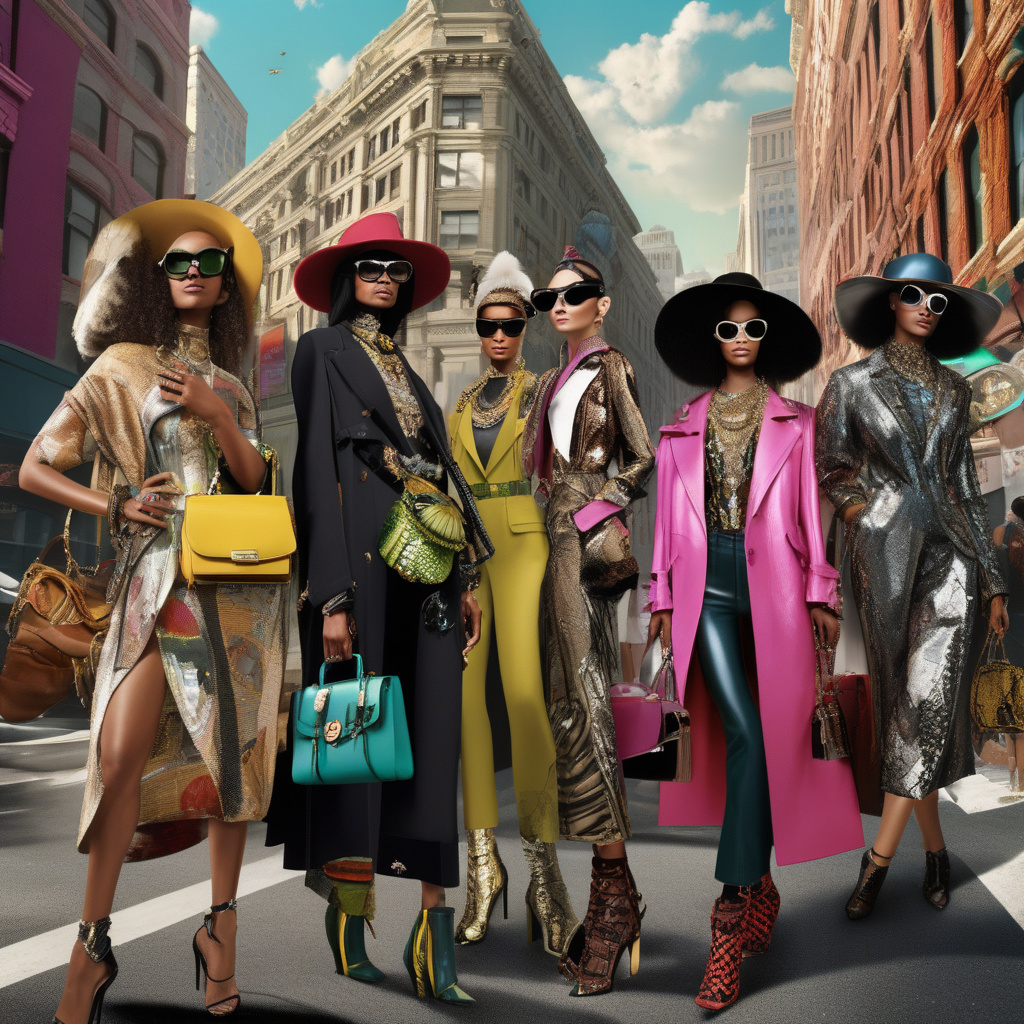How Far Can Fashion’s Accessory Obsession Go?
The world of fashion is in a fascinating state of flux, where the juxtaposition of minimalism and maximalism has captured the attention of consumers and designers alike. While many are investing substantial amounts in sleek, understated wardrobes, an equally compelling trend has emerged: an obsession with accessories. From layered necklaces to eccentric baseball hats, the accessory market is thriving as consumers seek to express individuality in increasingly creative ways. But how far can this obsession with accessories go?
The minimalist trend has long been associated with timeless elegance and refined aesthetics. High-end brands have capitalized on the appeal of neutral palettes and clean lines, enticing consumers to splurge on versatile yet pricey pieces that promise longevity and sophistication. With the rise of minimalist wardrobes, one might think that the appeal of accessories would dwindle. However, the opposite is occurring. Accessories are now viewed as a canvas for self-expression, allowing individuals to showcase their unique style without overhauling their entire wardrobe.
This shift towards maximalism in accessories is evident through the growing popularity of necklace stacks. Consumers are no longer content with a single statement piece; rather, they are layering various necklaces of differing lengths, materials, and styles. This trend not only amplifies personal style but also encourages creativity. Brands are responding by offering customizable options, enabling consumers to select charms, pendants, and chains that reflect their personalities. For example, retailers like Mejuri and Etsy have seen a surge in demand for personalized jewelry, highlighting the desire for accessories that tell a story.
Furthermore, quirky baseball hats have emerged as another symbol of this maximalist movement. Once relegated to casual outings, these hats have transformed into fashion statements. Designers are experimenting with bold colors, unique patterns, and even playful embellishments, making them a must-have accessory for fashion-forward individuals. This trend can be attributed to the rise of streetwear culture, where comfort meets style. Collaborations between high-fashion brands and streetwear labels have further blurred the lines, with accessories becoming integral to complete a look.
The rise of social media platforms, particularly Instagram and TikTok, has significantly influenced the way consumers approach fashion, especially accessories. Influencers showcase their personal styles, often highlighting how accessories can elevate even the simplest outfits. This visibility encourages consumers to experiment with their own looks, pushing the boundaries of traditional fashion. As a result, the accessory market has become a playground for creativity and self-expression.
The financial implications of this accessory obsession cannot be overlooked. As consumers splurge on high-quality minimalist wardrobes, they are simultaneously investing in accessories that offer a more affordable way to refresh their looks. Accessories, often more budget-friendly than clothing, allow consumers to keep pace with trends without breaking the bank. Retailers are capitalizing on this demand by expanding their accessory lines and offering exclusive collections that cater to this growing market.
However, the question remains: how far can this accessory obsession go before it becomes overwhelming? With the rise of fast fashion and the constant push for new trends, there is a risk of consumers feeling pressured to continuously acquire more accessories. This “more is more” mentality could lead to a cycle of overconsumption, prompting a need for balance. Brands must consider sustainable practices and ethical sourcing to mitigate the potential negative impacts of this growing obsession.
In conclusion, the accessory market is flourishing as consumers embrace maximalism while investing in minimalist wardrobes. This duality highlights a desire for individuality and self-expression in an increasingly uniform world. As trends evolve, the focus on accessories will likely continue to grow, providing a unique opportunity for brands to innovate and cater to diverse consumer preferences. The key for consumers and brands alike will be finding a balance that allows for creativity without falling into the trap of overconsumption.
accessories, fashion trends, consumer behavior, minimalism, maximalism
